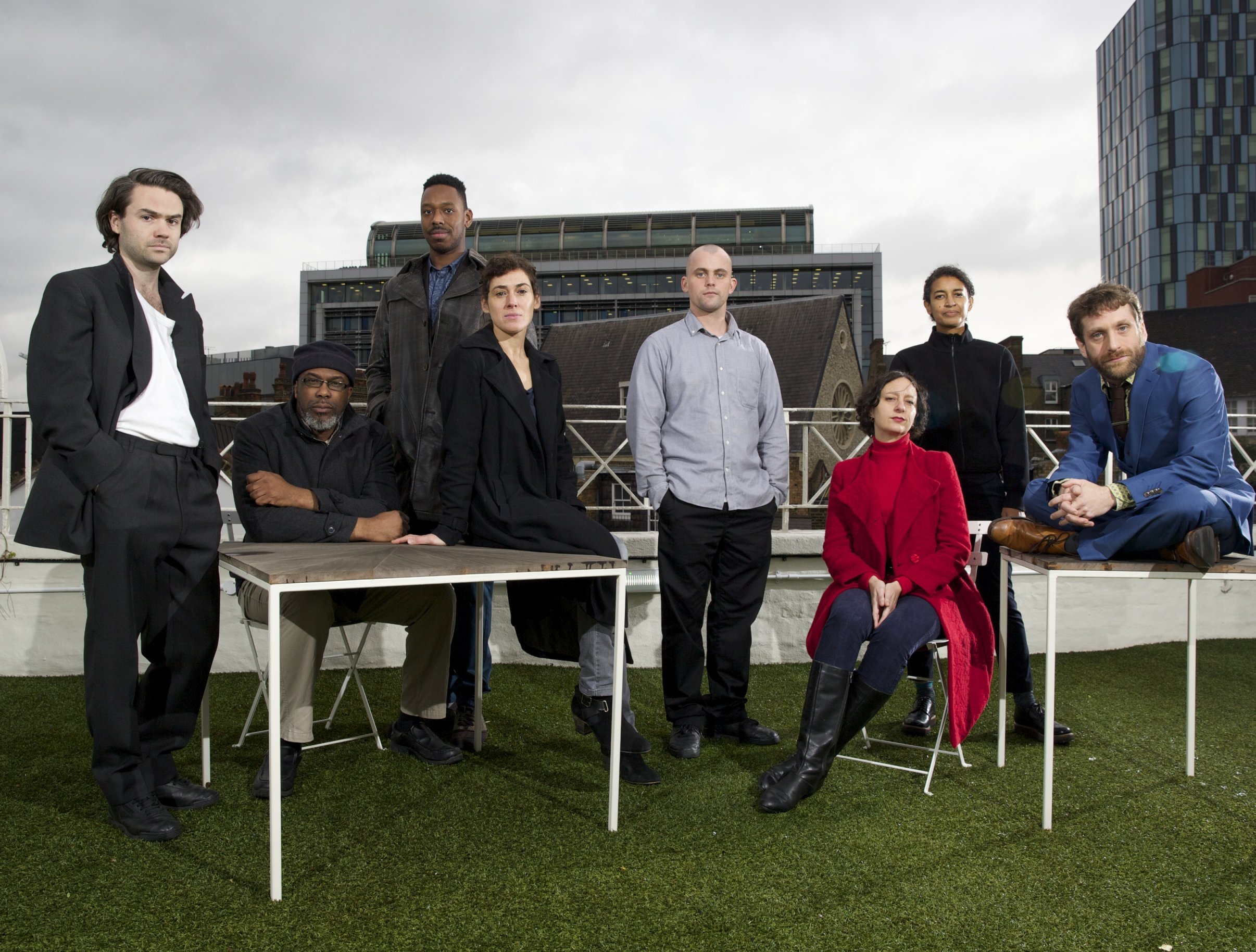
2014 award recipients (from left to right): Michael Dean, Pat Thomas, Shabaka Hutchings, Rosalind Nashashibi, James Richards, Bonnie Camplin, Katrina Palmer and Martin Green
Photo: Andy Paradise
Belief in the individual
The Paul Hamlyn Foundation’s Awards for Artists scheme has just celebrated its twentieth year. Sarah Jane Dooley gives an insight into how the scheme works.
Set up in 1993 to provide artists with financial assistance at a timely point in their careers, the aim of the Awards for Artists scheme is to give artists the freedom to develop their creative ideas and contribute to their personal and professional growth. At £50,000, spread over three years, it is the largest award of its kind in the UK. So far we have supported over 120 artists and composers and funding has totalled over £4.5m. Uniquely, support is given to artists and composers at various stages in their careers (recipients’ ages have ranged from 24 to 80) and comes with no strings attached on how the money can be used.When the awards were initially set up they were given to artists from different artforms each year, but in 1998 the trustees decided to concentrate on the visual arts. The idea was to make a stronger impact on this sector over a period of time and five awards have been given each year to visual artists since then. In 2007 we extended the awards to music and now make three additional awards for composers.
It is important to us that the money comes without the pressure that can be associated with delivering a commission or exhibition
The two awards schemes are coordinated simultaneously on an annual basis and share similar application processes. Each year we appoint a new set of nominators (20 for the awards for visual arts and 12 for the awards for composers) who are each asked to put forward the name of up to five artists/composers who live and work in the UK. Nominators are either artists themselves or professionals in related fields (museum and gallery directors, curators, journalists, teachers, musicians and programmers). We work hard to ensure that there is a good regional spread and that expertise covers as broad a range of artistic specialisms and musical genres as possible. Nominators are asked to write a short paragraph outlining why they believe it is an important moment for their nominees and how they think the award would benefit them. Nominated artists and composers are then invited to submit an application and recent examples of work. On average we receive around 45 applications for the awards for composers and 85 for the visual arts.
Each application is then considered by a panel of judges. Typically, each panel comprises a previous recipient as well as respected individuals from similar backgrounds to the nominators. The four external judges on each scheme change every year. Jane Hamlyn, Chair of the Paul Hamlyn Foundation, chairs the awards for visual arts and this year Joanna MacGregor has chaired the composer awards.
The recipients of the five awards for visual arts and the three awards for composers are announced at a reception in November each year. Only the names of the recipients are made public – not the names of the nominated or shortlisted artists. This process reflects our wish to reduce as much as possible the sense of disappointment for those who are not shortlisted or selected.
When shortlisting, panel members are asked to make their initial selection based on artistic talent and promise. The judges then go into more detail considering the nominee’s individual statements and financial need. The award has been used by recipients in a range of ways, such as covering studio rent, paying for childcare, to cut back from teaching, while others gather an ensemble of musicians to record or tour. Importantly, the awards aim to cover a wide spectrum of artistic practices and musical genres operating across, jazz, improvisation, folk and contemporary classical to live art and performance, installation, film, painting and sculpture. The focus is therefore placed on the artists themselves rather than on a particular type of practice or musical genre.
The stories of the artists and composers and what they have gone on to achieve is testament to the success of the scheme. Unlike the majority of our funding, we do not monitor or ask recipients to report back on progress. We trust that they know how best to use the funding to support their practice and as one artist said, the right to experiment and fail, as well as succeed. It is important to us that the money comes without the pressure that can be associated with delivering a commission or exhibition. The level is set to be equivalent to a minimum salary and we hope that this takes the pressure off day-to-day survival and allows recipients to focus on the development of their work. When asked to specify what the legacy is, we think it is simply that the artists and composers that we have supported are still out there making an impact through their work.
While the majority of our funding programmes are aimed at organisations, individual artists are important to us as they often deliver the work we fund to communities and participants of all ages. We have set up a special initiative called ArtWorks to explore how we can better support artists who work in participatory settings.
In this context, our Awards for Artists scheme is an important way for us to show that we believe passionately in individuals continuing to make art, despite all odds. We cannot imagine a world without artists – and we know that the world is a better place when artists can thrive. It is what drove us to set up the scheme in 1993 – and it is what continues to motivate us today.
Sarah Jane Dooley is Grants Officer (Arts) at the Paul Hamlyn Foundation.
www.phf.org.uk
Join the Discussion
You must be logged in to post a comment.